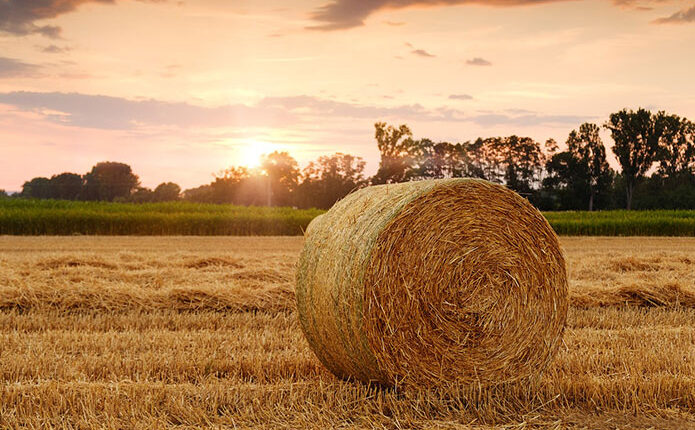
The harvest is coming…
Once again, agribusiness is the exception to the misfortunes of the pandemic. In an environment of economic recession, the GDP of Brazilian agriculture increased 0.4% in the second quarter of 2020. With the first and second harvests harvested, grain production in 2020 has already exceeded 250 million tons, an increase of 4.8 % in relation to the previous harvest, reaching 260 million tons, depending on the performance of the third harvest and the winter harvest.
The time has come to think about the next harvest, which technically started last July. 270 million tons of grains are forecast and with the combination of the warming of the international market and the devaluation of the exchange rate, profitability is estimated to be about 20% higher than in the harvest that ends.
Euphoria reigns in the agribusiness, as indicated by credit operations and advances in commercialization. The anticipated commercialization of the 2020/2021 soybean crop has already reached close to 50%, the highest historical level, and credit operations have focused on investment. Good sign, it shows confidence in the future and creates conditions to maintain the growth rate of the last years; however, it is necessary to better qualify this euphoria.
With regard to production, the prospects are positive. Information released by institutions such as the Center for Weather Forecasting and Climate Studies (http://clima.cptec.inpe.br) and the National Oceanic and Atmospheric Administration (https://www.noaa.gov/climate) do not suggest extreme weather anomalies over the next few months.
As for the market, the exchange rate is expected to remain favorable during the harvest that begins. Regardless of the exchange rate appreciation that occurred in the last few days due to the more favorable external environment and the possible course of economic reforms in Brazil, exchange rate appreciation beyond R $ 4.50 is not expected during the harvest that begins. If, on the one hand, the expected exchange rate is an inflationary factor sufficient for government sectors to flirt with the control of food prices, thus exposing the lack of attention to the country’s food security, it guarantees greater income to farmers.
On the demand side, the trail of destruction left by Covid 19 was not enough to inhibit the appetite of international buyers. The data made available by Trade statistics for international business development, indicate that, after a drastic reduction between January to April 2020, global imports of processed foods and agricultural products have already equaled the values of July 2019. Of the 10 largest global buyers (Union Europe, United States of America, China, Japan, Canada, Korea, Russia, Australia, Singapore, Malaysia and Thailand) of processed foods and agricultural products, only Japan (-11%), Canada (-3%), Russia (- 2%) and Australia (-3%) did not return to the values of July 2019. Of this group, only Japan showed a significant reduction in relation to the same period of 2019, however, the Japanese recovery is being vigorous with an increase of 17% between May, the worst month of imports, to July 2020.
Imports from the EU28 (US $ 29 million) and the US (US $ 8.5 million) equaled the mark of 12 months ago, while the world’s third largest importer, China (US $ 5.1 million), increased by almost 10% the value of your imports. China’s performance is an important signal for Brazilian agriculture, however, attention needs to be paid to the geopolitical dispute between the USA and China.
The Sino Americana geopolitical dispute reached a historic agreement, called Phase One, on structural reforms and changes in China’s economic and trade regime in the areas of intellectual property, technology transfer, agriculture, financial services. Phase One also includes a commitment for China to increase US purchases in the coming years.
The Agriculture Chapter of Phase One, which has the year 2017 as its basis, provides for China to make additional purchases of agricultural products (meats, seafood, rice, dairy products, infant formulas, vegetables, animal feed and biotechnology products the US over two years. The Agreement provided for an increase of US $ 12.5 billion during 2020, compared to 2017. Until July 2020, Chinese imports of agricultural products covered by the Agreement were US $ 9.9 billion.
Considering that less than 50% of the agricultural chapter of the Agreement has been fulfilled, further tensions are expected. It was not a demand problem, on the contrary, the recomposition of pig herds in China produces strong demand for soy. The point is that, while other major soy producers, such as Brazil, recorded record numbers of exports to China in the first quarter of this year, sales from the United States declined. The U.S. Department of Agriculture acknowledged in a recent report that export commitments to China continue to lag behind 2018 and 2017 levels.
The big question at the moment is not whether the trade agreement will survive, but what form this trade confrontation will take in the face of the electoral interests of the next presidential election in the United States. The November election will assess candidates’ ability to take a stand on China. China ’abuses’ or vague ideas on how to work with allies to oppose China will not be accepted.
The performance of the global food trade is an auspicious sign for the harvest that begins in Brazil. However, this does not mean that the effects of international politics and the pandemic will not affect Brazilian agriculture in subsequent harvests. The issue is not only in Brazil’s production and / or commercialization capacity, but also in the country’s international negotiating power, given the existing geopolitical conflicts. China and the United States is one of them.
Source: www.comexdobrasil.com